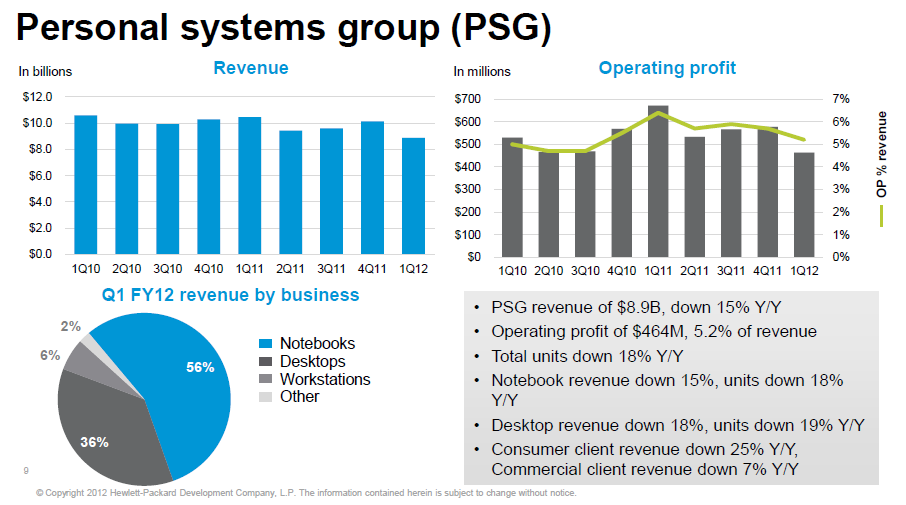HP combines printer, PC units; Analysts question synergy

HP on Wednesday made it official: It is merging its PC and printing units in a bid to improve the financial profile of both increasingly commoditized products.
The news, which surfaced on Tuesday, means that Vyomesh Joshi, who led the printer unit, is retiring. The combined unit will now report to Todd Bradley.

However, analysts were already questioning the rationale.
For instance, Sterne Agee analyst Shaw Wu said the combination isn't likely to result in much cost savings or synergies. Wu said:
While we believe there is room for cost synergies, we are not sure of the strategic benefits as we believe each has a unique business model. With a potential combination between its PC (30% of revenue) and printer (21%) business units, we believe there is room to cut costs, particularly with general and administrative and potentially with sales & marketing. However, we believe there could be a limit as it is debatable whether customers want to buy PCs and printers at the same time. More often than not, customers buy them separately. In addition, both follow different product cycles with PCs much quicker at 1-3 years vs. printers at 3-5 years and possibly longer.
Wu's comments clash with HP CEO Meg Whitman, who touted the move partially based on go-to-market improvements.
Whitman countered:
By providing the best in customer-focused innovation and operational efficiency, we believe we will create a winning scenario for customers, partners and shareholders.
There is a bit of deja vu with the HP move. Former CEO Carly Fiorina combined the units during her tenure. When Mark Hurd replaced Fiorina, he created two units and hired Bradley.
Donatelli steps up
With the restructuring, HP is putting its global accounts sales teams under the HP Enterprise Group, which will be led by David Donatelli. Donatelli currently is in charge of the server, storage and networking unit. Under the reorg, Donatelli will add technology services to the mix.
According to HP, the structure will "speed decision making, increase productivity and improve efficiency, while providing a simplified customer experience."
Jan Zadak, head of global sales at HP, will get an undisclosed new role. Marketing across HP will fall under Marty Homlish, chief marketing officer. HP's communications team will fall under Henry Gomez, chief communications officer. The company will also move real estate management into the global technology and business processes division.
By consolidating these functions, HP is hoping to create one unified voice instead of a series of silo-ed businesses.
Whitman's big task in 2012 is to improve HP profitability amid sluggish revenue growth as well as work on the company's messaging to employees and customers.
Two HPs
The move to consolidate the PC and printer unit essentially creates two HPs connected by central services.HP's printing and PC units will represent the consumer side of the company. Donatelli's bulked up unit is the enterprise side of the business.
What's unclear is whether the savings from combining the PC and printer units will result in higher research and development spending. Whitman has said HP wants to spend more on R&D. If cost savings do boost R&D spending, it's also unclear which side of HP---consumer or enterprise---will garner the most investment.
Barclays Capital analyst Ben Reitzes said in a research note that combining the two units may cause more disruption:
We believe if HP cuts costs, a large portion of any savings will be reinvested in R&D and sales. However, cost cutting does seem to be back in focus at HP as new CEO Whitman sees weaker revenues. Our concern is that this move may create some additional dislocation at HP, which just recently announced that it would keep PSG after discussing the potential to spin it off or sell the division entirely. The Imaging and Printing or IPG division accounts for 20% of revenues and 30% of profits. One other concern is that this re-alignment may signal that the division faces further challenges from a sales and margin perspective after several disappointing quarters.
Reitzes added that HP appears to be combining two units that are in secular decline. If that's the case, HP may have just effectively quarantined two slow-growth consumer units that may struggle in the post-PC era. The financial results going forward may dictate which side of HP carries the team---enterprise or consumer.